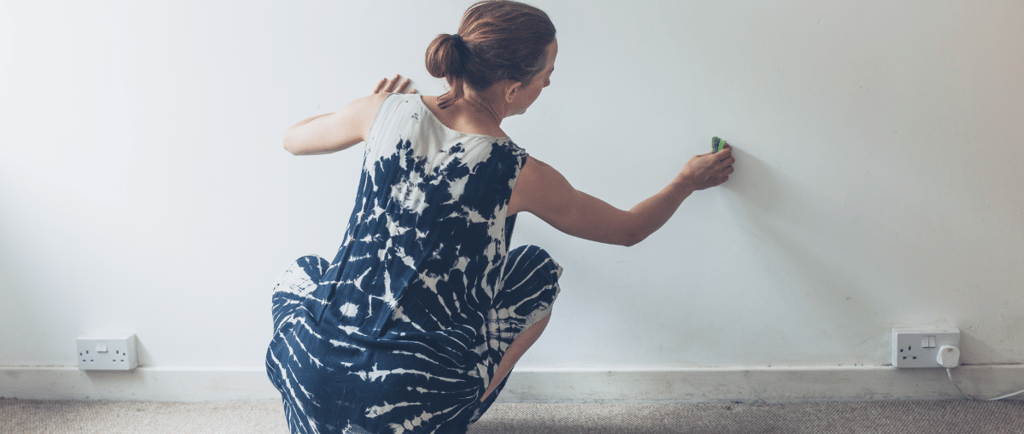Need to Know: How Often Do Household Walls Need Cleaning?
Uncover the secrets to maintaining spotless walls in your home. This blog post reveals the ideal cleaning frequency, signs that it's time for a wall scrub-down and easy tips for effective wall cleaning. Say goodbye to dirt and grime, and hello to a fresh, clean living space!
5/23/20243 min read


Walls are the silent sentinels of our homes, constantly standing guard yet often overlooked when it comes to cleaning. However, maintaining clean walls is paramount, not just for aesthetic reasons but also for your living environment's overall health and hygiene. Let’s delve into how frequently you should clean your walls and why it matters.
Factors Influencing Wall Cleaning Frequency
Household Occupancy
The number of people living in your home significantly impacts how often walls need cleaning. A bustling household with kids will require more frequent cleaning compared to a single-occupancy residence. More occupants mean more hands touching the walls, more potential for accidental spills, and generally more dirt.
Presence of Pets
Pets bring joy, but they also bring dirt, dander, and occasional wall scratches. Homes with pets should consider more regular wall cleaning to combat the buildup of pet-related grime. Frequent cleaning helps mitigate allergens and maintain a fresher home environment.
Lifestyle and Activities
Active households with hobbies that involve materials like paint, gardening, or cooking can lead to walls getting dirty faster. If you frequently entertain guests or have an open-plan kitchen, grease, and food splatters may also necessitate more frequent cleaning.
Environmental Conditions
Your geographic location can influence how often you need to clean your walls. Areas with high humidity may experience mold and mildew on walls, requiring regular cleaning. Urban environments might contend with pollution and dust accumulation.
Identifying When Your Walls Need Cleaning
Visible Dirt and Stains
One of the most obvious indicators that your walls need cleaning is the presence of visible dirt, fingerprints, and smudges. High-traffic areas like hallways and living rooms are prone to these marks and should be checked regularly.
Discoloration and Yellowing
Over time, walls can lose their original luster, especially in homes with smokers or where candles are frequently burned. Discoloration and yellowing signal a need for a thorough cleaning.
Odors
Walls can absorb and retain odors from cooking, pets, and smoking. If you notice persistent, unpleasant smells, it’s time to clean your walls to refresh your indoor air quality.
Cleaning Frequency for Different Wall Types
Painted Walls
For painted walls, a general rule of thumb is to clean them at least once a year. However, kitchens and bathrooms might require quarterly attention due to grease and moisture.
Wallpapered Walls
Wallpaper can be delicate. It’s advisable to clean it every six months with a soft brush attachment on your vacuum or a dry microfiber cloth to prevent damage.
Wood Paneling
Wood paneling should be cleaned quarterly to maintain its sheen. Use a wood-friendly cleaner to preserve the finish and avoid warping.
Textured Walls
Textured walls can trap more dust and grime. Cleaning them every three months with a gentle duster or vacuum attachment helps keep them looking their best.
Recommended Cleaning Methods
Gentle Dusting
Regular dusting prevents the accumulation of dust and dirt. Use a microfiber cloth or an electrostatic duster to gently remove surface dust from your walls.
Spot Cleaning
For localized stains, a spot-cleaning approach is best. Use a mild detergent mixed with water and a soft cloth to gently blot the area. Avoid rubbing, as it can damage the wall surface.
Deep Cleaning Techniques
Deep cleaning involves washing the walls with a solution of warm water and mild detergent. Use a sponge or soft cloth, and work in sections to prevent the water from dripping down and causing streaks.
DIY Cleaning Solutions
Homemade Cleaning Recipes
You can make effective cleaning solutions with common household items. A mix of white vinegar and water works well for general cleaning. For tougher stains, a paste made of baking soda and water can be applied and then gently scrubbed off. Always test a small area first to ensure the solution doesn’t damage your wall finish.
Maintaining clean walls enhances the beauty of your home and promotes a healthier living environment. By considering factors such as occupancy, pet presence, and environmental conditions, you can determine the optimal cleaning schedule for your walls. Regular dusting, spot cleaning, and periodic deep cleaning will ensure your walls remain pristine and fresh.


(609) 806 - 5565
help@freshlivingpc.com
Follow us on
